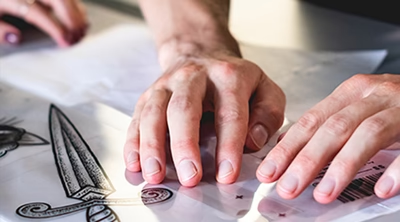Is Inkjet Better Than Laser for Screen Printing?
Screen printing is a famous method for printing designs and images on various surfaces. It is widely employed in the textiles, advertising, and signage industries. Choosing the right printing technology is crucial for achieving high-quality results when it comes to screen printing. Two standard options for screen printing are inkjet and laser printers. In this article, we will explore whether you should use inkjet printer for screen printing or go for laser printers, considering cost, versatility, and print quality.
Points to Consider When Confused Between Laser or Inkjet Printers
Here are few points that will clear out your doubts on whether to choose inkjet or laser printers:
Cost-Effectiveness
One of the key factors to consider when selecting a printing technology is cost-effectiveness. Inkjet printers generally have a lower upfront cost than laser printers, making them an attractive option for small businesses or individuals starting with screen printing. Additionally, inkjet printers are known for their efficient use of ink, resulting in lower ink consumption and reduced operational costs over time. This cost advantage can be significant, especially for high-volume screen printing projects.
Versatility
Versatility is another critical aspect to consider in the context of screen printing. Inkjet printers offer greater flexibility and adaptability, making them suitable for various applications. Unlike laser printers, inkjet printers can work with multiple inks, including water-based, solvent-based, and UV-curable inks. This versatility allows screen printers to use different inks based on the desired outcome and the printed material. Whether it's textiles, paper, plastics, or other substrates, inkjet printer for screen printing offer a more diverse range of options.
Print Quality
The quality of the printed output is of paramount importance in screen printing. Inkjet printers excel in producing high-resolution images with vibrant colors and intricate details. The droplet size control in inkjet technology enables precise ink placement, resulting in sharp and crisp prints. Furthermore, inkjet printers can achieve smoother gradients and finer halftones, making them ideal for applications that require fine details and color accuracy. While laser printers offer decent print quality, they generally fall short when reproducing intricate designs and subtle color variations.
Speed and Efficiency
Speed and efficiency are crucial considerations, particularly for large-scale screen printing projects. Laser printers typically exhibit faster printing speeds compared to inkjet printers since they employ a direct printing process that does not require physical contact with the substrate. However, recent advancements in inkjet technology have significantly improved printing speeds, narrowing the gap between the two technologies. Moreover, inkjet printers are highly efficient in color management and ink usage, resulting in minimal waste and reduced production time.
Maintenance and Reliability
Maintaining and ensuring the reliability of the printing equipment is crucial for any screen printing operation. Inkjet printers are known for their relatively low maintenance requirements. They have fewer moving parts compared to laser printers, reducing the risk of mechanical failures and the need for frequent repairs. Additionally, inkjet printer for screen printing are designed to handle different types of ink, minimizing the risk of clogging or nozzle damage. With proper maintenance and regular cleaning, inkjet printers can provide consistent and reliable performance, minimizing downtime and maximizing productivity.
Environmental Impact
In today's environmentally conscious world, considering the ecological impact of printing technologies is crucial. Inkjet printers offer significant eco-friendly advantages over laser printers. Firstly, they consume less energy during operation, resulting in improved energy efficiency and reduced electricity costs. This lower energy consumption contributes to a smaller carbon footprint. Secondly, inkjet printers generate less waste as they do not require toner cartridges, which often end up in landfills. Additionally, inkjet printers provide the option of using eco-friendly formulations such as water-based and eco-solvent inks, which have reduced volatile organic compound (VOC) emissions. By opting for inkjet printers in screen printing, businesses can align their practices with sustainability goals and minimize their environmental impact.
Conclusion
After considering various factors, inkjet printers are indeed a better option than laser printers for screen printing. They offer cost-effectiveness, versatility, superior print quality, and improved speed and efficiency. Inkjet printers provide the flexibility to work with different inks, allowing for a broader range of applications and substrate compatibility.
While laser printers may have an edge in speed, the advancements in inkjet technology have made them a highly viable option for screen printing. Whether you are a small business or a large-scale production facility, an inkjet printer tailored for screen printing can provide you with the necessary tools to achieve outstanding results.
Inkjet printer for screen printing offer a powerful combination of affordability, versatility, and exceptional print quality. By embracing this technology, screen printers can unlock a world of creative possibilities while meeting the demands of their customers. As the industry continues to evolve, inkjet printers are expected to play a pivotal role in shaping the future of screen printing.

.webp)


Comments
Post a Comment